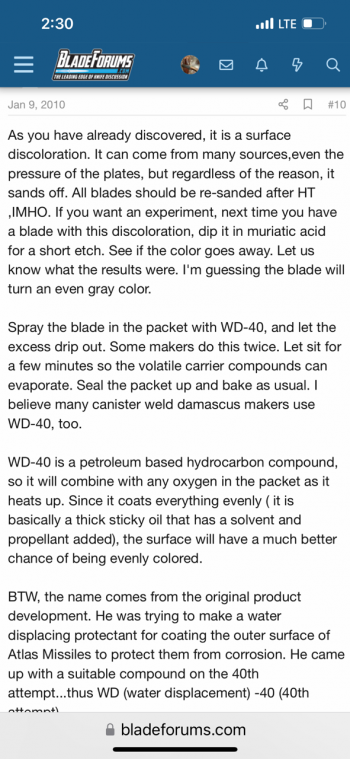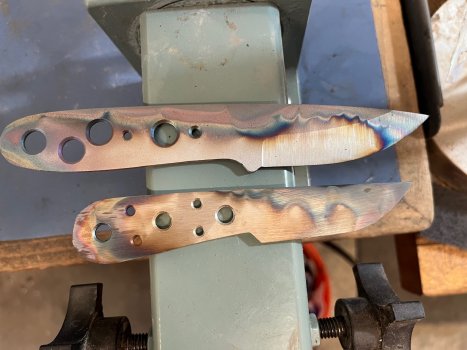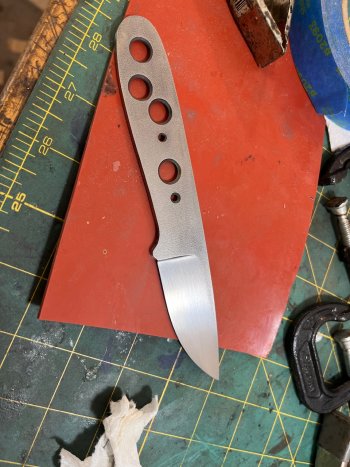MTBob
Well-Known Member
Using inert gas (Argon mostly) is a common feature with many HT ovens. The benefit is a reduction or elimination of surface scaling. I opted to not add that feature when I got a Paragon oven because filling the entire chamber with gas is costly and, in my opinion, doesn't make sense for my low volume hobby level knife making.
So, I decided to try what may be perhaps the next best thing - adding gas to the stainless steel pouch just before sealing the end. I disconnected the Argon hose from my TIG welder, set the flow to about 30 CFH, and ran gas in the open end for about 20 seconds.
I rarely grind the bevel pre-HT, but I wanted to see what distortion I might get on the edge. It has a rough unfinished hollow grind and plunge cut. I was expecting to see some distortion on the ground edge. After Cryo (with a clamp) and then tempering (with a clamp) the knife has remained straight and flat - no distortion.
Here's the result after quenching. There is virtually no scale, only color variation.

So, I decided to try what may be perhaps the next best thing - adding gas to the stainless steel pouch just before sealing the end. I disconnected the Argon hose from my TIG welder, set the flow to about 30 CFH, and ran gas in the open end for about 20 seconds.
I rarely grind the bevel pre-HT, but I wanted to see what distortion I might get on the edge. It has a rough unfinished hollow grind and plunge cut. I was expecting to see some distortion on the ground edge. After Cryo (with a clamp) and then tempering (with a clamp) the knife has remained straight and flat - no distortion.
Here's the result after quenching. There is virtually no scale, only color variation.




